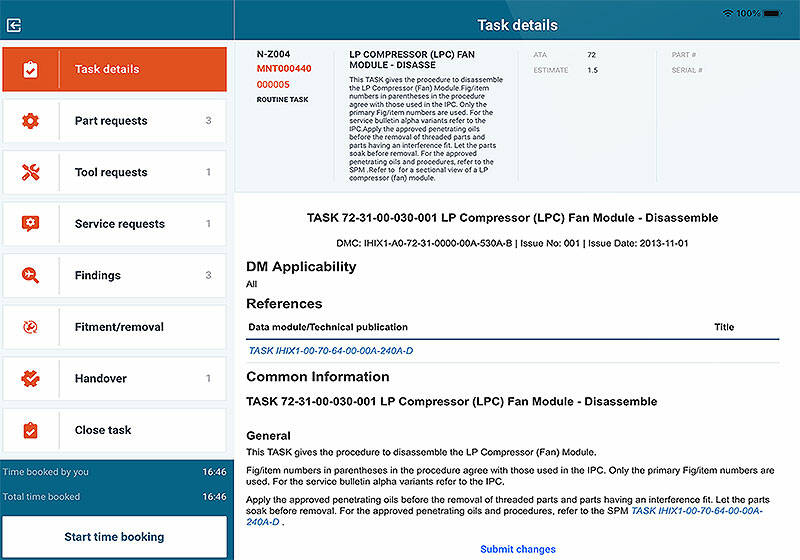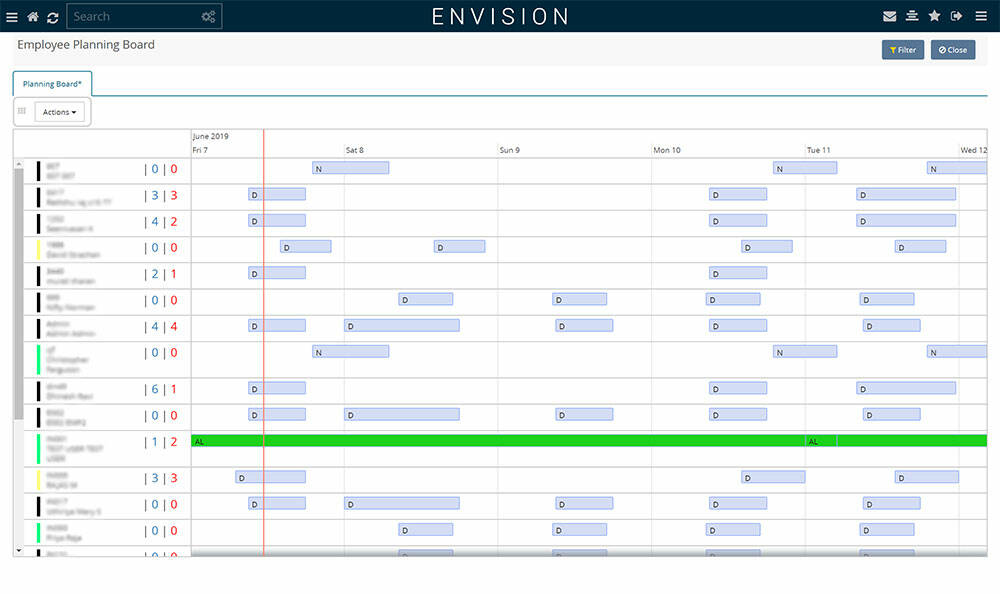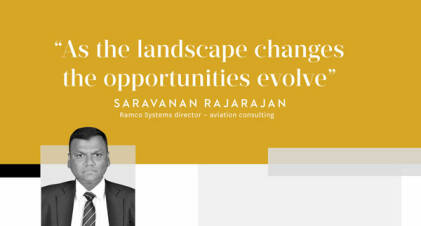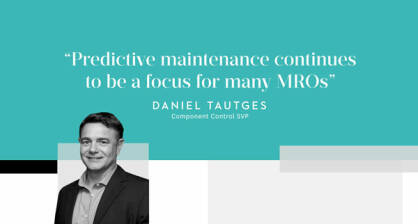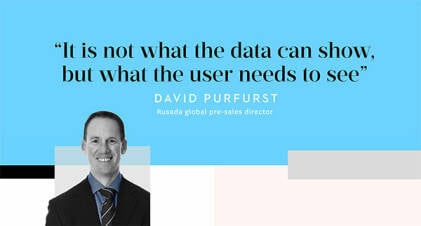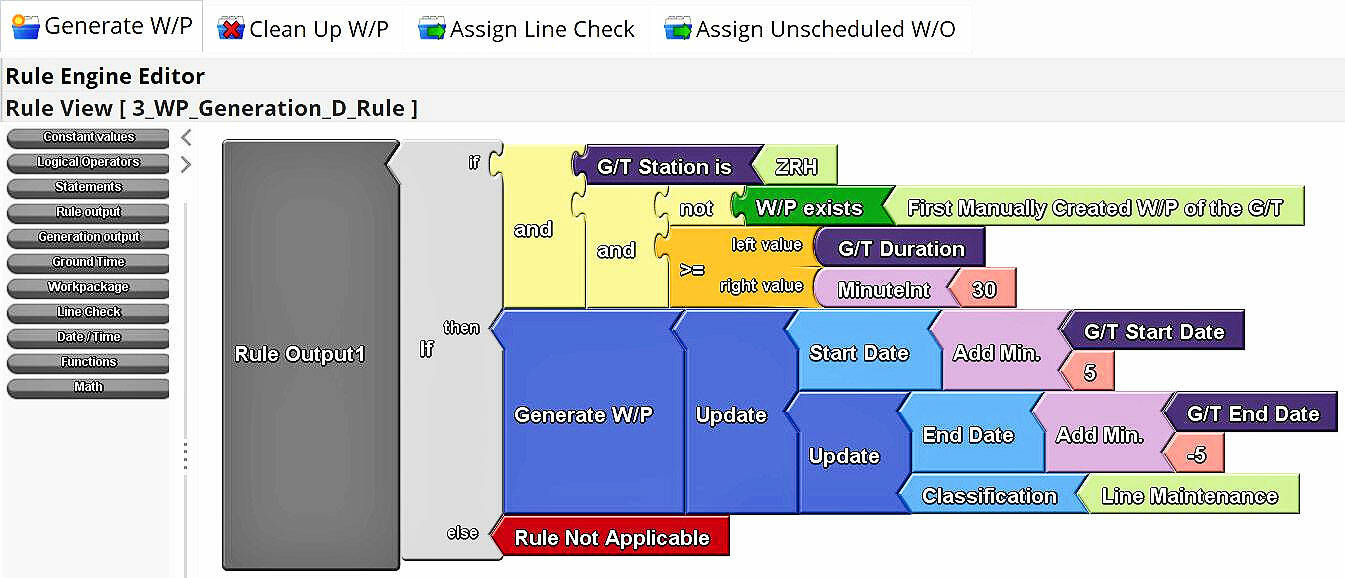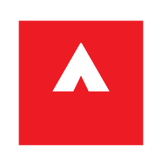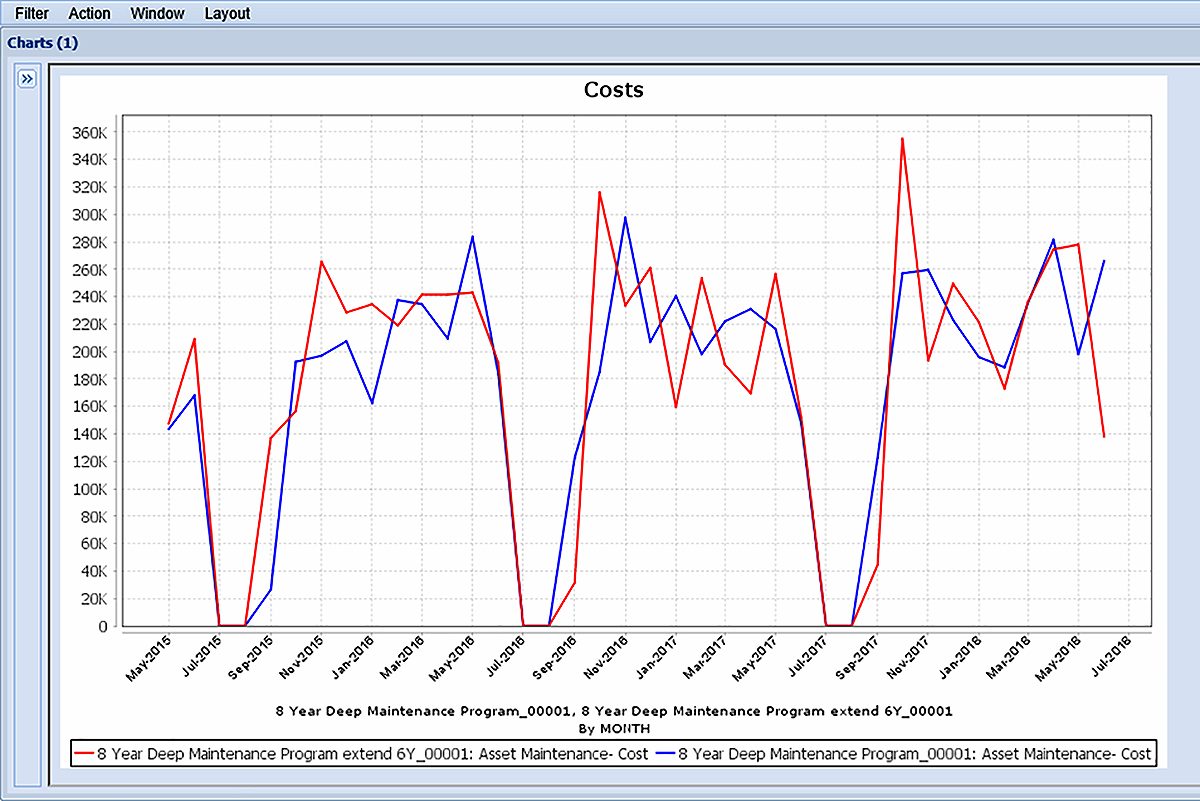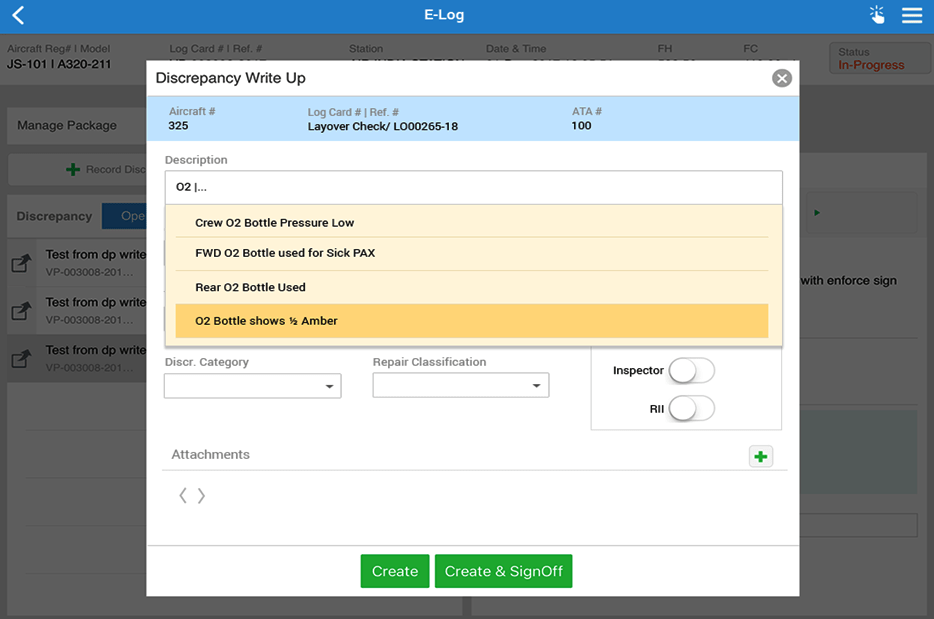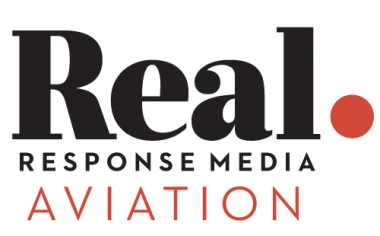Brought to you by

In association with
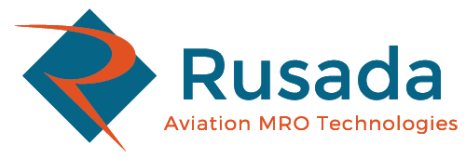

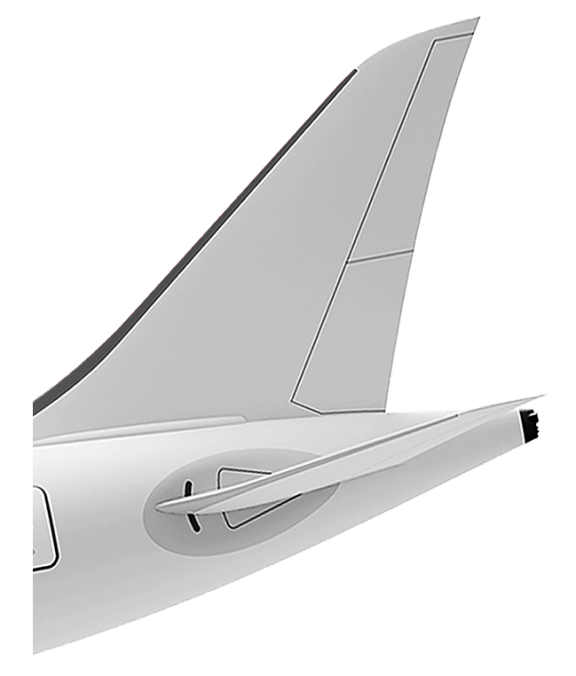

Featuring interviews with nine leading solutions providers
The importance of going digital &
ways to get ahead of the competition
HOW MRO SOFTWARE
MAXIMISES EFFICIENCY

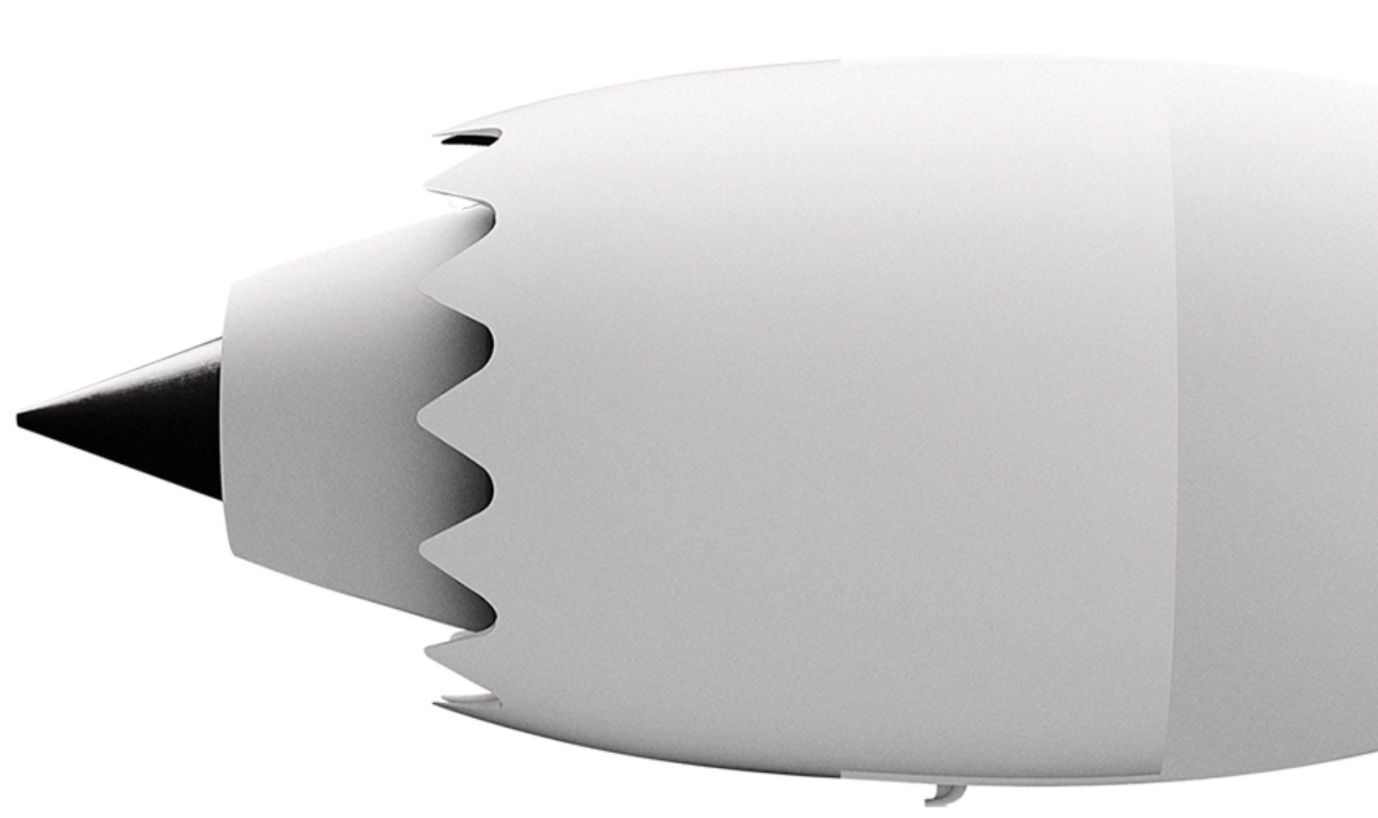

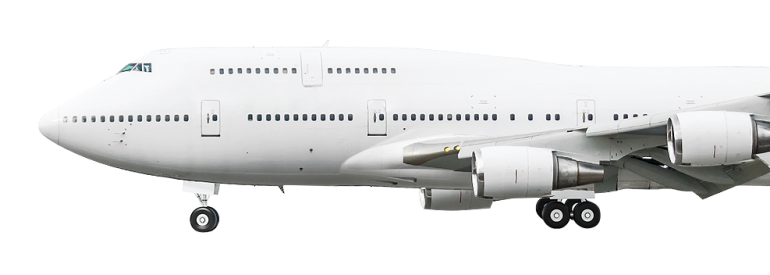




BACK TO TOP
<


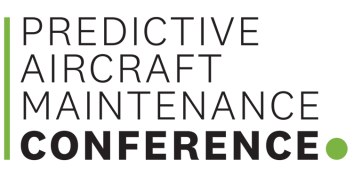



Aviation Business News
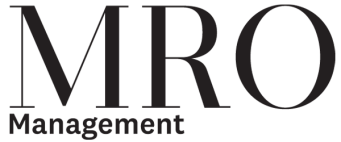

Jason Holland
Editor, MRO Management
Welcome to MRO Management’s dynamic digital publication on MRO software, which features comprehensive interviews with nine leading solutions providers. They cover everything from market trends and the future of maintenance planning to getting the best from the data and assessing how to successfully accelerate digitisation plans.
This is MRO Management’s first leap into dynamic digital magazines and special reports, and software is an apt subject to begin with, given the importance of going digital both in the worlds of MRO and media publications.
We see this as an exciting opportunity to complement and expand upon our existing print title and aviationbusinessnews.com website, going into more depth into specific sectors, issues, MRO hubs, companies or anything else, while presenting information in a stylish, easy-to-read and modern format. We are able to make use of videos, audio, graphics and presentations to complement the usual, still vital, words and images.
This special report on the present and future value of MRO software is sponsored by Rusada, whose ENVISION solution is an effective tool for the management of airworthiness, maintenance and flight operations.
We hope you enjoy reading – or more accurately, experiencing – it. As you will discover from the nine interviewed MRO software experts, there are many efficiencies to be gained, if the data is presented and used in the right ways. Software solutions will help MROs and airlines navigate the post-Covid world, whether it is a first implementation, an upgrade, or a clearer way of looking at existing platforms.
Please do get in touch if you have any ideas for other subjects we could explore in these dynamic digital publications. The possibilities are endless.
@avbusinessnews

CONNECT ONLINE WITH AVIATION BUSINESS NEWS
Introduction

BACK TO TOP
<








Rusada
Creating personalised and customisable displays to maximise the value of data


Swiss
AviationSoftware
The importance of the user community in driving software development
BACK TO TOP
<









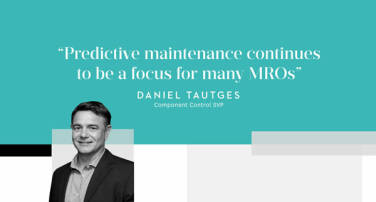


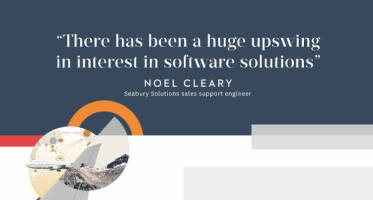


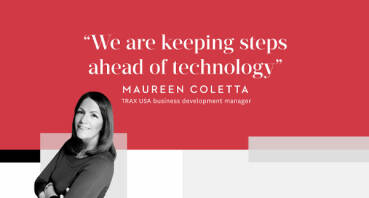
Has Covid-19 caused an upswing in interest in MRO software solutions?
Seabury Solutions
Model-based artificial intelligence allows MROs to simulate operations
Historical data and advanced algorithms can be leveraged by new technologies to deliver practical value
Airlines and MROs should partner with entities that have the data that they can benefit from
Digital transformation and process automation represents the future
Keeping steps ahead of technology transitions is the key to success
Why organisations that embrace modern software systems will win the future
JSSI
Ramco Systems
Aerogility
Ultramain
TRAX
Component Control
Each page of this dynamic digital publication features an interview with an expert from one of nine MRO software providers.






BACK TO TOP
<
“As software markets mature, consolidation is inevitable and something we expect to see in our industry in the years ahead”
“We are experiencing an increased demand for our services above what was already a surprisingly buoyant past 18 months”
watch



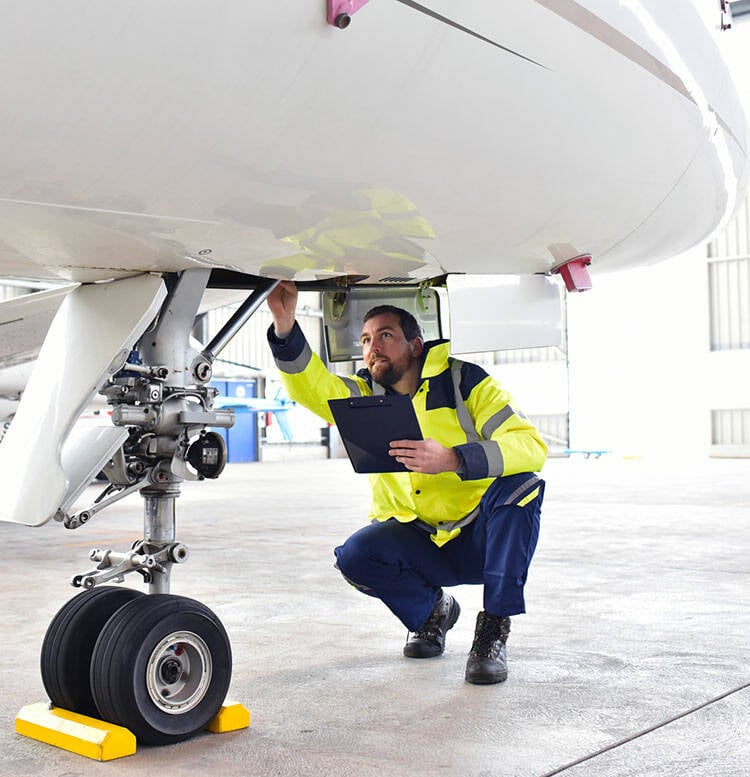



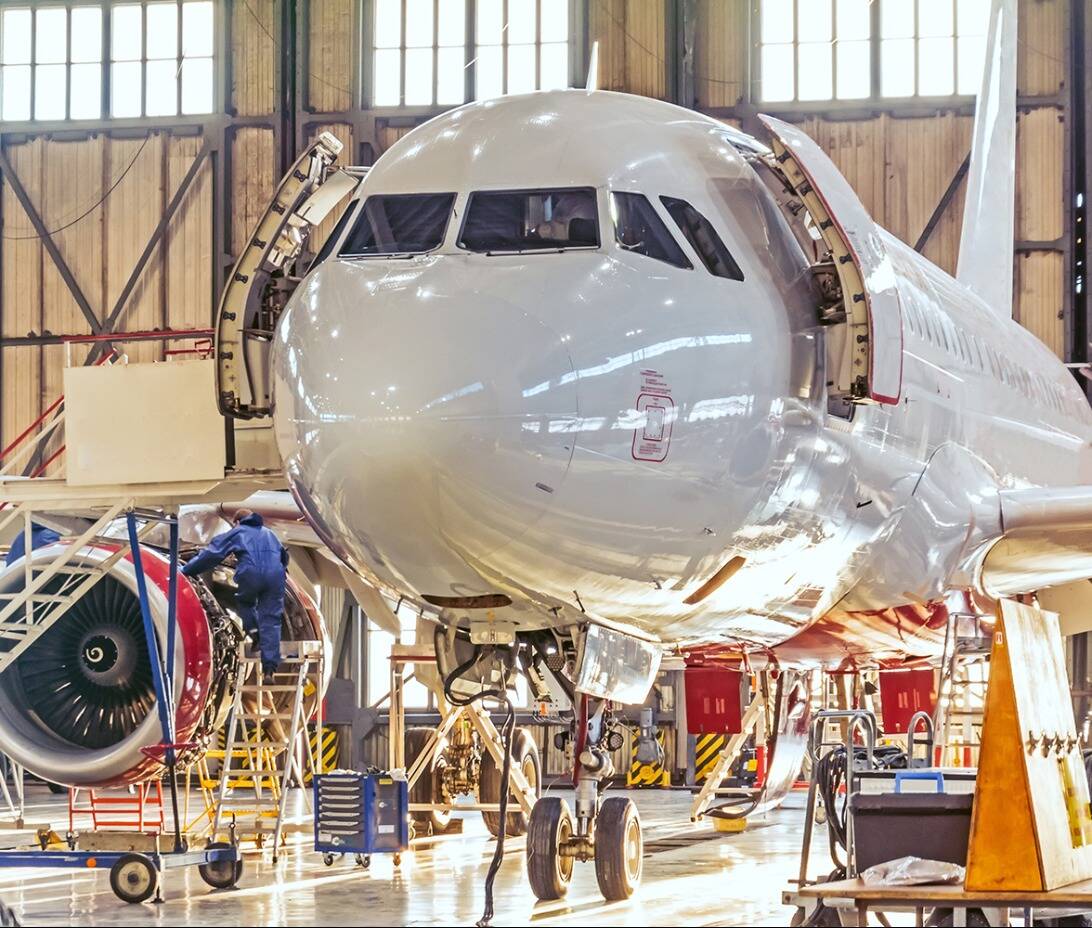
There are a lot of companies offering MRO planning and predictive maintenance solutions. Do you see there being increased consolidation?
As software markets mature, consolidation is inevitable and something we expect to see in our industry in the years ahead. We believe this will be in terms of breadth of functionality rather than depth of functionality, as suppliers look to offer end-to-end solutions to customers who don’t want a fragmented IT infrastructure.
There is also always the demand from customers for their solution to be at the forefront of the latest technological advancements. Many current MRO software offerings are still running on outdated technologies, but don’t have the customer numbers, the funds or the demand to upgrade. For these providers it may make sense to merge with other companies.
About the software
ENVISION is a software solution for the management of airworthiness, maintenance and flight operations. It provides users with a simple, easy-to-use interface for accessing and managing information within an aviation environment.
The culmination of over 30 years of experience, ENVISION utilises the most up-to-date technologies to empower aviation decision-makers, providing them with helpful and informative data that adds value to their organisation. As a web-based solution it can be accessed using a PC, tablet or phone, and can seamlessly integrate with other systems.
Do you believe airlines and MRO companies should accelerate their plans for digitalisation?
The pandemic has shown that efficiency is key, with many organisations now having to do more but with less resource. Digitising maintenance operations results in a substantial increase in efficiency and allows you to easily identify areas of improvement.
Even prior to the pandemic we were seeing a steady increase in businesses looking to upgrade from legacy systems and spreadsheets to a more modern solution, as the cost benefits are clear. Small to medium organisations can save tens of thousands of hours per year in staff time by switching to digital processes and records, and for larger organisations the savings can be into the hundreds of thousands.
What challenges must be overcome in convincing companies to use or improve planning and scheduling software and platforms?
For companies who already have systems in place but are looking to upgrade, the initial investment in both time and resources can make them a bit hesitant. So, it’s up to us to demonstrate how ENVISION will benefit them not just in the first year they are running the system, but how it does after three, five, ten years of using it. Once the mindset changes from short-term planning to long-term, the value is clear.
Are there any new innovations on the horizon in the MRO planning and scheduling sector?
The industry is emerging with more and more ways of generating and passing on data. Innovations such as aircraft health monitoring systems, tool location tracking and component blockchain can provide huge amounts of useful data to operators and maintainers. This can be used to plan and forecast with greater precision and optimise any underperforming processes. As I mentioned before though, this data will only be useful if your software platform can analyse and present it in a clear and concise manner, that is relevant to the user and in time for them to react. This is exactly what ENVISION does.
How do you see the future for MRO planning and scheduling in a post-Covid world?
The only real change we expect to see is frequency. The number of maintenance events will slowly start to increase as the world opens up again, but predicting the speed of this will be tricky and planners will have to be agile in their approach. Having sophisticated software in place can make this a lot easier. ENVISION’s ‘Fleet Management’ module allows you to forecast maintenance based on a number of scenarios using recent flight utilisation or planned utilisation to provide an accurate prediction of events. Users can also quickly re-forecast at the click of a button if the situation changes.
Have you seen increased interest or take-up of IT and digital solutions for MRO planning as part of cost-reduction measures?
We have seen a very mixed approach during the pandemic with regards to interest for MRO software. Some companies have had to completely cut all costs and delay their search for a new solution. Others, who have had a bit more financial flexibility, have used this slower period to reassess their operations and determine how they can improve, with their software platform being an obvious place to start.
It is hard to predict anything with a degree of confidence at the moment, so companies are right to be cautious, but as things are now starting to open up, we are experiencing an increased demand for our services above what was already a surprisingly buoyant past 18 months.
What differentiates ENVISION from other software solutions?
Many customers cite our wide range of functionality, focus on simple customisation and dedication to user-friendliness as the key reasons for choosing us.
Our multi-discipline solution means you can use one system instead of several. ENVISION has 10 modules covering the areas of airworthiness, MRO and flight operations, while also supporting business functions such as human resources and finance. Having your teams on one platform increases their coordination and cooperation, while removing duplication of effort.
ENVISION’s web-based interface has been designed around the user, with each area focusing on the day-to-day workflow of that role, guiding them through the process from end-to-end and without the need to click through numerous unrequired views. Our interface isn’t just a spreadsheet in a browser, it uses numerous methods of graphical display and process flows to make things as clear as possible, allowing users to truly manage by exception.
We believe our system can save users significant amounts of time each day by focusing only on what they require. This saved time leads to greater efficiency and ultimately a better margin for the company.
Rusada global pre-sales director
DAVID PURFURST
but what the user needs to see”
MRO Management: In your view, what are the essentials of effective maintenance and planning software?
David Purfurst: The aviation industry is incredibly complicated and complex, so any maintenance software solution must have in-depth functionality and a high level of flexibility to overcome the challenges that organisations face. This, however, must not come at the cost of user friendliness. Ease of use is key, due to varying levels of experience and knowledge, as is fast access to relevant information. The most effective solutions are those that can successfully balance both.
How can the massive amounts of data be turned into real, practical maintenance benefits?
The analysis of an organisation’s data provides meaningful insights into how they are performing and can identify key areas for improvement. The more data you have, the more insights you can provide and with greater accuracy. The problem is deciding which insights to present to users, so they don’t drown in data.
Our approach with ‘ENVISION’ is not asking what the data can show, but what the user needs to see. An example of this is our customisable dashboards, where users can create a personalised display of graphical metrics that show how their specific area of the business is performing.
BACK TO TOP
<










Are there any new innovations on the horizon in the MRO planning and scheduling sector?
From our perspective, we are seeing more and more demand for automation with regards to planning, not just in the planning of events into work packages depending on all the various parameters that should be considered, but also the assignment of staff to the planned maintenance. We now turn our attention to this area whilst keeping in mind that we also have customers whose fleet size or MRO capacity does not require such automation. Again, it comes back to the adoption rate and change management. There are some out there whose business model demands technology play a key role in the activities, and others who need it to simply support their users in making the correct decisions.
What differentiates your AMOS solution?
At Swiss-AS we have a very strong AMOS community that has a voice. The development roadmap for AMOS is driven not only by the needs of the industry and regulations, but also by the needs and requirements of the community. It means that we are able to keep our development moving forward and offer a solution that keeps the user friendliness that our customers have come to rely on whilst ensuring we not only meet today’s demands but in some cases be a part of setting future standards as part of ATA working groups.
Have you seen increased interest or take-up of IT and digital solutions for MRO planning as part of cost-reduction measures?
We have seen a steady interest in AMOS over the past year and had more customers join the AMOS community in 2020 than in 2019, which was already a good year. Due to the fact that AMOS is an integrated software solution, planning is just one of the areas that customers are looking to make advances in. The digital transformation of processes and business is still one of the key attractions and AMOS has had the functionality to satisfy this for some time. Of course the current situation has put more focus on budgets than ever before, but it seems that some players in the market are taking this opportunity to ready themselves for the future and ensure that they are best placed to attract new business as the upturn in demand begins.


Do you believe airlines and MRO companies should accelerate their plans for digitalisation?
There is so much variation in the current situation of MROs across the industry, but in short, yes. The obvious immediate gains in digitalisation could be considered cost and process streamlining, removing the need to combine paper and digital processes. Additional benefits could be considered as the standardisation of the industry and how the workscope of maintenance is shared. Only once operators and MROs are working to a common digital standard will we see more widespread benefits. Currently an advanced and paperless solution such as AMOS has to be able to, and does, cope with paper-based as well as digital processes and any combination of the both. By pushing forward with their digitalisation plans both our airline and MRO customers can begin to better utilise not only their skilled workforce but the capability of AMOS.
What challenges must be overcome in convincing companies to use or improve planning and scheduling software and platforms?
[One challenge is] the large volume of data that has to not only be managed but also combined in such a way that it can be used effectively. When companies are using separate solutions for the management of the maintenance, shift planning, clock-in/clock-out and qualification control, many interfaces are required and this can be a costly solution. A solution such as AMOS allows all of these separate elements to be combined in a single database ensuring that all the requisite data is available to allow optimised solutions and control to be achieved.
Then trust in the solution has to be gained. Once the end users can see that when correctly set-up, AMOS will enable them to change their focus and fine tune planned events rather than having to spend time authoring work instructions or removing non-applicable tasks the trust grows and each role can focus on their responsibilities rather than having to check up on parallel departments.
Perhaps this all comes simply down to change management. Most businesses that are still in business today are there for a very good reason, they use their current solutions well and they know how to extract the best from what it can deliver. We have to be able to help those potential customers understand that they can work differently, and most likely more efficiently whilst raising their game by adopting digital standards not only for the future but for today.
How can the massive amounts of data be turned into real, practical maintenance benefits?
There are benefits of varying scales to be expected, from evaluating the number of returned parts after a work package to planning the ground time to best utilise the available manpower without having a negative impact on the operation.
What we really are looking for now is automation in planning. We need to be able to not only rely on the quality and consistency of the core data but also take into account timely reporting back of events for re-forecasting or status update.
Swiss AviationSoftware sales representative
“We have to be able to
help potential customers understand that they can work differently”
“Some are taking this opportunity to ensure that they are best placed to attract new business as the upturn in demand begins”
“We have a strong
community that has a voice”
MRO Management: In your view, what are the essentials of effective maintenance and planning software?
Chris Clements: The absolute core essentials come down to accurate management and control of the data and the system’s ability to handle the complexity that comes with today’s fleets. With effectivity of maintenance tasks changing based on configuration, both hardware and software, as well as modification status and aircraft mission status, a system such as AMOS is expected to ensure that all tasks are accounted for and performed as required with minimal daily input.
We also have to account for the fact that we have different requirements from the Part M and Part 145 organisations. As well as the compliance data managed by the Part M, the Part 145 needs additional data that is critical to the planning such as manhour, resources and parts.
When combined with the aircraft utilisation the planning can begin to take shape and additional elements can be introduced such as facilities and manpower.
About the software
Swiss AviationSoftware’s MRO software solution AMOS offers a high degree of integration and functional depth coupled with ease of use. The company has 30 years of experience in the MRO software market and is a 100 per cent subsidiary of Swiss International Air Lines and thereby embedded in the Lufthansa Group.
BACK TO TOP
<


“We have offline
capabilities that are essential for working with limited connectivity in the hangar”
“TRAX has a development roadmap that includes AI options such as predictive analytics and machine learning”




customers
200
TRAX can point to the high return on investment results achieved by its existing base of over 200 customers worldwide as a success story
billion
$33
In the case of airlines and MRO providers, unexpected maintenance problems and protracted downtimes can take a heavy toll on profitability and customer goodwill. In 2019 the FAA estimated the annual cost of delays to airlines and passengers at US$33 billion

What challenges must be overcome in convincing companies to use or improve planning and scheduling software and platforms?
While challenging, it is entirely feasible to convince companies that the outlay of money and resources to implement an integrated planning and scheduling software solution brings sizeable return on investment (ROI). TRAX has only to point to the high ROI results achieved by our existing base of over 200 customers worldwide as a tangible outcome. Customers can move to fully paperless operations starting from a few dollars per aircraft per hour, a far lower cost than employing people to manage paper-based systems. The difference in the current environment is the deep-going crisis of the aviation industry due to the pandemic. Yet enhanced planning and scheduling is exactly what is critical to moving ahead in the near future. Optimising fleet utilisation, overcoming increased lead time in spare parts inventory, planning condition-based maintenance, achieving shorter turnaround times and cost reduction in overtime are only some of the gains that can be achieved by employing an improved planning tool.
How can the massive amounts of data MRO software produces be turned into real, practical maintenance benefits?
Making informed, intelligent and real-time business decisions is critical for aviation operations. MRO software such as TRAX eMRO is a prime candidate for fostering data analysis. With so many transactions entered across an operation, tremendous amounts of raw data are captured on an ongoing basis. The key is transforming this data into actionable information that provides the ability to improve organisational effectiveness, lower costs and increase revenue. That is why we have developed numerous dashboards and enhanced our custom report generation features to turn ‘big data’ into ‘great data’ – in other words, usable. Captured statistics and reports can identify trends and problems that can then be resolved.
MRO software can utilise artificial intelligence (AI) concepts in the aviation industry sphere to best take advantage of all the data that is being generated. TRAX has a development roadmap that includes AI options such as predictive analytics and machine learning.
A big challenge for maintenance operations is in balancing the cost of retaining optimal inventory levels while maximising availability. The less obvious challenge is in developing software that can take the data, utilise machine learning, create algorithms and ultimately develop pragmatic and predictive forecasting models. For example, predicting when a component might fail so that it can be replaced in a planned way before that occurs can partially be projected using existing descriptive analytics tools such as reliability monitoring.
Yet there can be additional factors to take into consideration in inventory stock level decisions such as forecasting parts availability from suppliers, understanding changes in demands, company growth plans, other fleet planned requirements or labour availability. Many of these factors require forecasting conditions and making actionable decisions. And all of this must be translated into the eMRO product via software development.
In the case of airlines and MRO providers, unexpected maintenance problems and protracted downtimes can take a heavy toll on profitability and customer goodwill. In 2019 the FAA estimated the annual cost of delays to airlines and passengers at US$33 billion. Having a predictive maintenance system that is dynamic, that can incorporate machine learning algorithms, uses statistical analytics, and intelligence-driven planning can help overcome these always to be expected “unexpected activities”.

How do you see the future for MRO planning and scheduling in a post-Covid world?
The future for MRO planning and scheduling lies in leveraging technological advances that will allow operations to achieve more productivity and efficiency. This includes going paperless and mobile. Using data analytics to look beyond current aircraft utilisation and assessing intangible factors to better predict future load factors can help. Intangible factors include customer confidence in flying and government shutdowns and restrictions imposed on travel. With reduced resources and budgets, airlines are flying with a tight profit margin.
In addition, there are specific measures that can be taken to address the industry flux around the number of aircraft in a fleet that will be deployed based on lifting of travel restrictions. TRAX adapted the software to manage planning for grounded aircraft – to enable customers to keep ‘automated’ control over these essential items. We understand that other operators have to use manual and time-consuming Excel sheets to manage the grounded aircraft inspections that our enhanced software functionality has automated.

Do you believe airlines and MRO companies should accelerate their plans for digitalisation?
So many CAMOs are still using legacy or previous generation MRO software. They have been limping along with solutions that are functional, but clearly do not take advantage all the technological advances available with more modern software. Airlines have benefited greatly from upgrading their inflight entertainment, reservation and service software. They now see the need to invest in and enhance their maintenance operations to gain equivalent efficiency, enhanced performance, better aircraft availability and hence improved profit margins. In addition, the regulatory authorities are now insisting that they have a commercial MRO software product in place as opposed to disparate solutions such as Excel or other homegrown databases.
TRAX believes that airlines and MROs should accelerate their plans for digitalisation. This is especially so given that they are already behind the curve if they have not adopted such technology. It has been interesting to see how many operators have recognised this reality and are making efforts to digitalise even in the context of the current challenging environment and economic constraints.
About the software
TRAX USA’s fully integrated ‘eMRO’ software provides the means to manage and maintain all information generated by a maintenance organisation. With an open architecture and easy installation, eMRO was built to be user-friendly, allowing users to manage their maintenance operation from desktops or remotely from phones or tablets.
What are the main features of TRAX’s ‘eMRO’ software, and what differentiates the solution?
The most effective planning software is a fully integrated ERP-type system, such as TRAX eMRO. This includes interfacing with the customer’s flight planning system so that the latest flight schedule data is available to ensure that maintenance slots are easily allocated within the existing plan, or flights can be requested to be moved or transferred to another aircraft if there is a conflict. Forecasting can be made along with associated resource, manpower and parts requirements. Additional modules that handle contract management, shop work, aircraft records, document management, reliability tracking and invoicing increase efficiency. Enhanced forecasting is achieved with overall insight into aircraft status and repair requirements.
Keeping steps ahead of technology transitions has become a hallmark of the TRAX business perspective. Our current focus is on mobilising aviation maintenance. This approach is best demonstrated by TRAX’s successful implementations of its web-based eMRO system and associated eMobility suite of apps. These products leverage today’s technology to support digital signatures, paperless operations and manuals, RFID-capability for logistics, biometric security, iOS apps, web-based solutions and the ability for its users to work anywhere with easy access to real-time information. One of the key elements that differentiates TRAX’s mobile solutions is that we have offline capabilities that are essential for working with limited connectivity in the hangar, at outstations, or at the aircraft gate.
MRO Management: In your view, what are the essentials of effective maintenance and planning software?
Maureen Coletta: Unscheduled work is as much a part of a maintenance operation as forecasted and preventive upkeep. Any operation and its essential software must plan for the unplanned to be successful. Therefore, the planning module needs to be a robust tool to efficiently manage the preparation of both scheduled and unscheduled, short- and long-term maintenance events. The goal is to keep the aircraft flying safely and maximise aircraft utilisation.
Planning software requires functional, interactive dashboard views for easy access to data such as fleet status, out of service aircraft, maintenance check status, personnel and parts availability and tasks due. Work pack creation needs to be rapid and easy to modify as needed. Sophisticated functionality should allow for visibility into engineering and reliability data.
An absolute essential in today’s aviation environment is the option to work from anywhere and not be tied to a monitor in a back office. Cloud-based and mobile solutions allow immediate access to analytical data and up-to-date transactions for rapid response to critical or time constraint issues to assign maintenance events quickly and easily. In addition, technological features such as electronic signoff, off-line capability, biometric security, barcode scanning, RFID tracking, notifications and voice recognition increase productivity.
Maureen Coletta
TRAX USA business development manager
“We are keeping steps
ahead of technology”
BACK TO TOP
<



“Successful execution of maintenance in accordance with the plan will result in satisfied customers and more growth”
50%
of the world’s A380s are
maintained using Ultramain

watch


About the software
Ultramain is a web-based, paperless M&E/MRO software, in which real-time data collection is key. By using smart phones and tablets, Ultramain provides solutions that simplify data collection in both paper-based and paperless environments. The well refined and mature software benefits both operators and maintainers by removing the complexity of data entry. The result is a paperless system-of-record that is integrated, comprehensive and easy to use.




There are a lot of companies offering MRO planning and predictive maintenance solutions. Do you see there being increased consolidation?
As in all things the best will do well and others less so. Increased consolidation would not be surprising.
And in this competitive market, what differentiates your solution
Ultramain is a comprehensive and mature system that has been built and refined over decades. It has been written and re-written into the latest technologies of the day four times over the years and each time it becomes more powerful and easier to use. Ultramain combines deep capabilities and maturity with state-of-the art technology and unparalleled ease of use. Ultramain is a paperless, all digital system that provides rich support for the entire maintenance enterprise using mobile devices where workers are provided all the information, they need to do their work efficiently and correctly. Ultramain excels at optimisation of complex tasks, meaningful visualisation of complex data that enables decision makers to see and understand what’s happening as it happens and what will happen in the future.
What challenges must be overcome in convincing companies to use or improve planning and scheduling software and platforms?
Showing companies how they could operate with a system like Ultramain opens doors. And with our hosted offerings operators don’t need expensive in-house IT support staff to maintain complex servers, database management systems, operating systems because we provide and manage all of that for them as part of our hosted service.
How can the massive amounts of data be turned into real, practical maintenance benefits?
The short answer is, with a system that can do such a thing – Ultramain. Benefits include creation of optimised plans and a process for improving them after each use. Being able to know and schedule all resources needed to execute a plan is critical to avoid downtime and delays. Being able to efficiently digitally communicate additional work requirements found during a check to customers and obtain their authorisation to proceed, with agreement on additional costs, is critical to minimising overall check time and receiving timely payment without billing disputes.
Knowing the work completion status of each task at all times informs management if a check will be accomplished according to plan, and if not, why not. Knowing in advance the profit to be made in accomplishing a check per a plan is critical to profitability management and growth. Knowing what you should be doing, what you are doing, and how you are doing is critical to a successful MRO business. Successful execution of maintenance in accordance with the plan will result in satisfied customers, more business, more profit – and more growth. This is what Ultramain facilitates.
How do you see the future for MRO planning and scheduling in a post-Covid world?
Passengers will resume traveling and the industry will not only recover but will grow over time. The industry will be larger than ever before and with that will see more maintenance services provided for more aircraft. With the availably of software systems such as Ultramain, organisations that embrace them will be more efficient and profitable than those that don’t. Organisations who execute better will win the future. It’s that simple.
MRO Management: In your view, what are the essentials of effective maintenance and planning software?
John Stone: Effective software must address a number of critical items that are essential to effective maintenance and planning. For starters, the software must account for all the various elements needed to put a maintenance plan together such as accounting for required labour, including skills, qualifications, teams, labour hours needed, parts, tools, hangars, required conditions, and more. It needs to provide users tools to build a plan from prior experience. Effective planning software needs to support task flow planning considerations such as zones, panel opening/closing, crafts and the like. It needs optimisation algorithms to optimise task sequencing and the overall check accomplishment. It needs to allow users to see the plan using easy-to-understand visualisations.
With an optimised plan in place, it needs equally powerful scheduling capabilities to order or reserve parts, schedule labour, reserve hangar slots and specialised tools, and do it far enough in advance to achieve the scheduling goals. It needs capacity modelling capabilities. It needs to electronically provide digital task cards to engineers for use on mobile devices (tablets and phones) without the need for paper anywhere in the process. It needs to provide for electronic signoffs, annotations, shift handoffs, stamping and all else that can be done on paper task cards, on electronic task cards. It needs to inform managers of work accomplishment in real time as it happens.
Upon work completion it needs to immediately calculate correct billing to quickly send to the customer along with all post execution ‘paperwork’ in a form customers desire. After check completion it needs to analyse work execution based on the plan to create and refine more accurate future plans.
John Stone
Ultramain vice president product management
“Organisations who execute
better will win the future”

BACK TO TOP
<


“Operators focusing on cost control may not understand the value of planning to ensure slot availability”




About the software
Aerotrac offers a fully integrated solution to manage business processes specific to the aviation MRO industry, from aircraft maintenance, modification, planning and tracking to engine and component overhaul, manufacturing, parts distribution, material forecasting and in-depth analysis of work performed.





Have you seen increased interest or take-up of IT and digital solutions for MRO planning as part of cost-reduction measures?
The increased interest in digital solutions has mainly come from larger operators. They have access to significant amounts of operational data, so it is slightly easier to adopt new technologies and make the most of the digital insights afforded financially and operationally. For smaller operators with less access to data there is a reliance on solutions providers. However, I believe there is an opportunity to utilise industry-wide data to enhance planning and scheduling for all.
Do you see there being increased consolidation
Yes, I do. Those with access to large volumes of data will no doubt be in a good position and smaller providers will potentially be swallowed up.
And in this competitive market, what differentiates your solution?
JSSI provides a full package of maintenance support and financial services that leverage more than 30 years of technical knowledge, experience, buying power and data to support every stage of the aircraft life cycle; from aircraft acquisition to aircraft teardown and part-out. JSSI has more than 70 technical experts strategically located around the world to personally manage each maintenance event from start to finish. Effective maintenance planning and scheduling is a key part of our service.
Our range of Conklin & de Decker digital solutions includes the industry-leading software Aerotrac. This fully integrated digital product includes maintenance planning and scheduling suitable for both fixed- and rotary-wing aircraft. Aerotrac also provides everything MROs need to manage their unique business processes; from aircraft maintenance, modification, planning and tracking to engine and component overhaul, manufacturing, parts distribution, material forecasting and in-depth analysis of work performed. Aerotrac is the most comprehensive maintenance software in its class and covers all business processes in a single application, including technical, commercial, inventory and logistics and finance. This is all fully supported by JSSI’s professional services team.
Do you believe airlines and MRO companies should accelerate their plans for digitalisation?
Airlines and MRO companies should partner with entities that have the data that they can benefit from. OEMs are applying pressure on MROs, and as a result, MROs need to find ways to support customers with additional value – they need to stay competitive.
What challenges must be overcome in convincing companies to use or improve planning and scheduling software and platforms?
Educating the market on maintenance costs and timings is a big challenge. These costs are coming, and operators and owners need to know exactly what needs to be paid for and when so that effective planning can be utilised.
How can the massive amounts of data be turned into real, practical maintenance benefits?
By taking advantage of the huge amounts of available data, effective software can predict when maintenance is going to happen, assist in location planning and minimise any downtime. Software based on real-world data can calculate the expected parts or component requirements based on historical needs, which enables pre-planning for parts purchases, advanced exchanges and repair orders. It can also compare expected costs and parts requirements against actual needs.
How do you see the future for MRO planning and scheduling in a post-Covid world?
Most operators will focus on cost control as a priority and may not understand the value of scheduling and planning to ensure slot availability – this includes replacement parts supplies and rental engines. There will potentially be a high demand for MRO services. As a result, maintenance shops, operators and facilities will need to plan and schedule effectively to avoid delays. In addition to this, parts supply may be an issue and so understanding the expected schedules will help avoid disappointment.
JSSI SVP of business development EMEA & APAC
Mark Winzar
“Planning and scheduling effectively
is essential to avoid delays”
MRO Management: In your view, what are the essentials of effective maintenance and planning software?
Mark Winzar: The essentials of effective maintenance and planning software are to give users access to full maintenance schedule details, allow for changes to be made easily, and for utilisation and maintenance due lists to be updated in real time, providing up-to-date and actionable data.
Other requirements are the ability to run accurate due list reports, including expected costs and a forecast of the parts or components required. Recognition of the regulatory and release certificates needed is also a must-have capability.
BACK TO TOP
<



thousand
22
A provider of commercial off-the-shelf ERP software for aviation MRO, Quantum Control has over 22,000 users
About the software
Quantum Control is an ERP solution for MRO, manufacturing, distribution and aircraft services. Component Control can offer 30 years of aviation expertise, the global ecosystem of CAMP Systems companies, and an extensive platform breadth and depth.
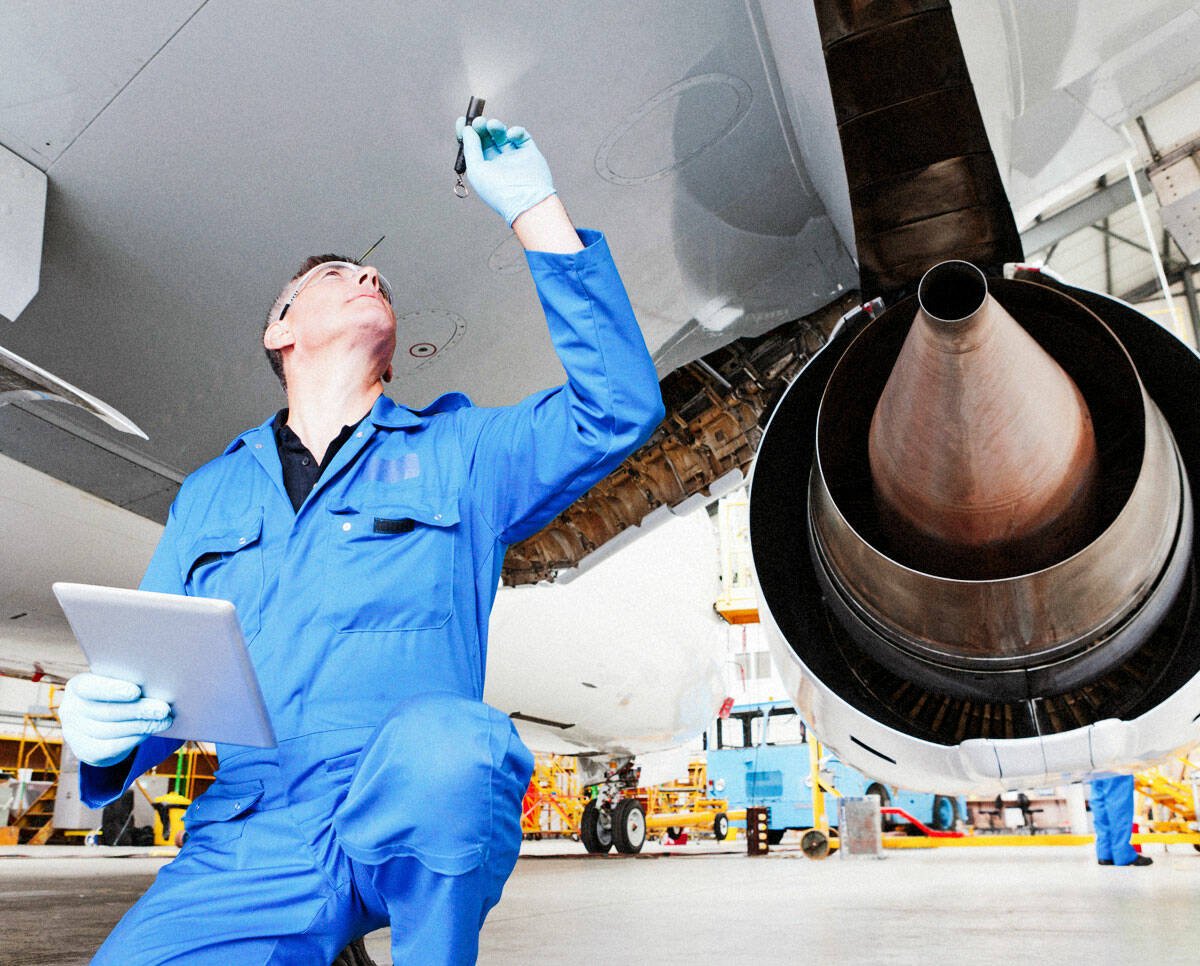


What challenges must be overcome in convincing companies to use or improve planning and scheduling software and platforms?
When companies understand the ROI for the software then they don’t need to be convinced that they need it. There are sometime investment hurdles or lack of IT bandwidth. Component Control has overcome many of those by offering SaaS models and cloud managed solutions. A modular approach to implementation also provides scale for smaller customers to get started and grow into a larger solution when needed.
Are there any new innovations on the horizon in the MRO planning and scheduling sector?
The largest part of our annual budget is R&D. We continue to focus our efforts to improve and expand on our platform. Multi-platform applications, expansion of our analytics reporting, as well as integrations with third party providers are all in our current 2021 roadmap.
How can the massive amounts of data be turned into real, practical maintenance benefits?
Turning data into actionable analytics is a key component in the solution. Our clients implement real-time reporting and push notifications available in the MRO and planning software. Key data entered should be utilised in regular analytic reporting to provide various details such as work in progress, parts requirements and turnaround time. Examples also include reporting on which work orders are meeting their commit date and which are not. Delays in work can create bottlenecks and cascade down, impacting profitability and increasing cost. Regular reporting provides visibility of these tasks when they arise allowing opportunity to correct them before it’s too late.
How do you see the future for MRO planning and scheduling in a post-Covid world?
Continued efforts for digital transformation and process automation using ERP software solutions such as Quantum Control. Predictive maintenance continues to be a focus for many MRO organisations. Many are still figuring out details on the best way to deploy these processes, but it appears to be more of a priority now than ever before.
Do you believe airlines and MRO companies should accelerate their plans for digitalisation?
There are several of our customers who have adapted digital transformation. The net benefit is the elimination of duplicated records, improved visibility into workflow and labour tracking, better capacity management and the elimination of human errors.
Component Control SVP

Daniel Tautges
“Predictive maintenance continues
to be a focus for many MROs”
In your view, what are the essentials of effective maintenance and planning software?
Quantum Control’s maintenance and repair solutions manage regulatory compliance while minimising data entry and maximising efficiency and productivity in your hangar.
Real-time visibility of all work orders/packages and job cards is essential in maintenance and planning software. Cost analysis for labour and materials along with profitability monitoring using estimated and actual costs is also a key component to look for in software. Mobile work recording (MobileTech) captures labour activity, material usage and job card status changes. Component Control’s integrated approach includes functionality for quoting, work order and package generation, job card management, labour recording, consumables management, rotable exchanges, shop services, vendor services, cost and profit management, and invoicing, enabling you to track, analyse and plan all aspects of maintenance required with a single solution.
MRO Management: What are the main features of Component Control’s Quantum Control software, and what differentiates it from the competition?
Daniel Tautges: With over 22,000 users, Quantum Control is the leading provider of commercial off-the-shelf ERP software for aviation MRO. The application can be supported on-premise or in a cloud environment. The depth and breadth of the feature set is unmatched. Within the application best-in-class process and workflows manage compliance, risk and profit. Integrated accounting, purchasing, services and shop control all scale to support small to very large clients.
BACK TO TOP
<










“The aviation business
of the future may not be a continuing smooth growth curve; there could be frequent fluctuations in demand”

watch

About the software
Aerogility’s software allows companies to run intelligent ‘what-if?’ analysis and detailed business simulations of their operational performance. This helps companies make more informed business-critical decisions, delivering higher availability, lower costs and safer operations.

Aerogility CEO
“Aerogility is a safe ‘sand box’ where aviation managers and planners can easily explore the options in front of them and optimise their preferred strategy quickly”
Gary Vickers
“We can gain deep insights into
what might happen in future”
Have you seen increased interest or take-up of IT and digital solutions for MRO planning as part of cost-reduction measures?
It goes without saying that the pandemic has had a devasting impact on the aviation business. Airlines are always focused on the bottom line and this is now even more acute. However, we have found that carriers are very receptive to new solutions that can deliver better forecasting and planning agility and productivity cost-effectively.
Our airline customers have increased their use of the Aerogility system over the last year because its core function is to support users to respond to ever-changing situations and to prepare for when the market will return. The capability to create a range of new planning scenarios and adapt existing one quickly has proved invaluable in these uncertain times. Our expectation is that as the market recovers, airlines will prioritise innovative solutions that enable them to be more adaptable and responsive to future change and, for a while at least, uncertainty and change will be the norm.
Are there any new innovations on the horizon in the MRO planning and scheduling sector?
At Aerogility, we are currently developing new releases of our maintenance planning model with various functional and usability changes. These include more planning variables such as maintenance escalations, variations and planning for aircraft that require multiple bays. We are enhancing the user experience of our interactive planner to handle very large scale plans with the level of performance required for an informative and responsive planning environment.
More broadly, Aerogility is developing a major new version of its software that will integrate multiple departments in a collaborative and optimised forecasting and planning process. The new version will link commercial and procurement teams directly to operational and MRO planning, joining up strategic processes that for many organisations are too fragmented and inefficient.
Do you believe airlines and MRO companies should accelerate their plans for digitalisation?
In short, yes. Digitalisation enables different teams to integrate their work more closely and collaborate on business-critical analysis, plans and decisions. This integration is key to the efficient use of expensive assets and resources. Plus, digitalisation is a foundation for faster and more agile forecasting and planning processes and is essential if you expect to succeed in a fast-changing market.
What challenges must be overcome in convincing companies to use or improve planning and scheduling software and platforms?
Affecting change is always difficult. Many organisations become entrenched in their time-honoured working practices and get rather attached to their spreadsheets. It can be challenging to get them to change the way they work and adopt innovations. We often work with farsighted people who see the benefits of Aerogility immediately and appreciate that we are at the start of an exciting journey.
What are the major benefits?
We can gain deep insights into what might happen in future by stepping through the data generated at each stage of the simulation – that why our strapline is ‘get your hindsight in advance’.
For instance, we fly a fleet every day of the simulation period and generate a vast amount of data during that time. In a multi-year simulation we will consume life on the aircraft and its systems, and perform all the required maintenance events, which will include generating all the data associated with spares, kits, tools, and skilled resource. This data is then used post-simulation to automatically generate a range of predictive analytics, including plans and schedules, key performance indicators, and charts and graphs.
Planners always face uncertainties because of the nature of their job. The great thing about model-based AI is that MRO teams can weigh up a range of what-if options, and understand the effects of different trade-offs. For example, the impact of a part failure may result in bringing in the aircraft for maintenance earlier than expected. This will immediately affect the longer-term MRO plan and possibly create a cascade of planning side-effects that must be resolved.
How do you see the future for MRO planning and scheduling in a post-Covid world?
In previous years, airlines would have expected summer schedule planning to take months, but due to the pandemic, carriers are being forced to make decisions faster in response to changing expectations of market demand.
There is a growing realisation that the aviation business of the future may not be a continuing smooth growth curve, and instead there could be frequent fluctuations in demand. This means that airlines need a more agile and responsive approach to making planning decisions, and must be able to react more efficiently to these changes as they occur. There will also always be a need to continually squeeze more efficiency out of the operation and maximise the utilisation of assets.
MRO Management: In your view, what are the essentials of effective maintenance and planning software?
Gary Vickers: An essential aspect is generating an outcome that resolves various planning constraints optimally, such as available capacity or skills.
The software should provide a clear visual overview of the maintenance plan and have the capability for the user to adjust their plan quickly and immediately see the impact. Planners must be able to investigate alternative planning options without starting from scratch each time or affecting the integrity of their baseline strategy. This is essential in a dynamically changing operational environment where new things come up every day.
What differentiates Aerogility’s solution?
Aerogility is based on intelligent multi-agent software technology and is a type of model-based AI. We believe we can claim a ‘world-first’ in delivering a commercially available multi-agent enterprise solution on a web-based platform.
Aerogility combines a holistic and realistic software model of an airline operation with powerful scheduling and optimisation algorithms, which means that we can run fast simulations of a business’ entire operations over any period. We model very complex operations and maintenance processes to maximise business advantage.
Aerogility is a safe ‘sand box’ where aviation managers and planners can easily explore the options in front of them, optimise their preferred strategy quickly, and be confident that their decisions are trusted. Forecasting problems before they hit and working out the optimal resolution in advance is a game-changer in a fast-paced environment like aviation – and essential if you want to keep your fleet flying and stay profitable.
BACK TO TOP
<






“Our MRO lab in Singapore is currently working on various technology enablers such as block chain, Internet of Things and digital twins”



About the software
Ramco Aviation’s MRO software solution portfolio offers the digital framework to build a scalable ecosystem for efficient MRO operations. Accessible on cloud and mobile, ‘Anywhere Apps’ significantly reduce transaction time both during AOG conditions and aircraft turnarounds. Ramco is also innovating in the enterprise software space with artificial intelligence and machine learning based solutions.






Do you believe airlines and MRO companies should accelerate their plans for digitalisation?
We are seeing that the MRO sector is taking this as an opportunity to accelerate digital transformations, rather than slow them down. There were projects even before Covid-19 but they were held back due to operational priorities and decision-making delays. Organisations are investing now in digital transformation to provide them with a competitive edge in the post-recovery phase. We are witnessing a renewed interest in concepts like paperless shopfloors, e-signatures and digital collaboration. Large MRO organisations are even considering breaking away from their heavily customised and expensive legacy systems to out-of-the-box best of breed solutions.
What challenges must be overcome in convincing companies to use or improve planning and scheduling software and platforms?
Organisations need concrete evidence that the software platforms will improve the KPIs on cost and turnaround time reduction. This cannot be achieved through software demos and presentations. Companies expect to run proof-of-concept phases to determine if the software is delivering the promised results. As the proof-of-concept is done using the real time organisational data (limited to one hangar or bay), the results can be quantified. This helps organisations to extrapolate the quantifiable benefits and arrive at the business case.
Are there any new innovations on the horizon in the MRO planning and scheduling sector?
The level of maintenance plan optimisation will tend to rise in the future as more sophisticated artificial intelligence and machine learning algorithms are deployed along with massive amounts of data. Digital twin technologies will help in digitising and proactively managing the data which is not normally available to MRO planning software until it is reported.
How do you see the future for MRO planning and scheduling in a post-Covid world?
We expect to have an uptake of intelligent automation and reduction in manual intervention for planning and scheduling functions. We will be seeing extensive automation on task and access panels sequencing, automatic assignments of the rostered staff with right skills to tasks and non-routines, proactive identification and mitigation of bottlenecks due to capacity, labour, parts and tools.
MRO planning and scheduling will also be tightly integrated with upstream contracts management, e-publications, HR functions and production functions for real time decision assist capabilities. Artificial intelligence and machine learning based algorithms will be leveraged to evaluate in real time the impact of a complex non-routine or non-availability of a critical tool or part and recommend the best course of action to achieve the overall maintenance plan objective.
Have you seen increased interest or take-up of IT and digital solutions for MRO planning as part of cost-reduction measures?
Yes, we are seeing an interest in MRO digitisation initiatives as a whole and having the right MRO planning tool is one of the key drivers. The need for having the right planning tool to optimise the overall costs and prepare for the future has never been more critical than now.
There are a lot of companies offering MRO planning and predictive maintenance solutions. Do you see there being increased consolidation?
Yes, we do see a high possibility of consolidation in the future between niche players in planning and predictive maintenance solutions and large ERP software companies.
And in this competitive market, what differentiates Ramco’s MRO software solutions?
The value delivered by the software depends on how it can adopt the new technologies, thereby providing operational efficiencies. We are at the forefront of leveraging the new technologies like artificial intelligence and machine learning, bots, mobility and business analytics integrated with the product and in use at many of our customers’ installations. We work with our customers continuously to identify the pain points and apply appropriate technologies to solve the problem. We believe the process is continuous, as the business landscape changes the challenges and opportunities evolve for software to deliver value.
Our MRO lab in Singapore is currently working on various technology enablers such as block chain, Internet of Things and digital twins. Utilising the latest IT software in maintenance will greatly increase the improvements in efficiency they deliver to our customers.
How can the massive amounts of data be turned into real, practical maintenance benefits?
Ramco’s artificial intelligence and machine learning capabilities leverage historical data and advanced algorithms to deliver practical value to our customers. As an example, when a mechanic records a defect in the Ramco ‘Mechanic Anywhere’ mobile applications, the software informs the mechanic of the similar defects reported considering the technical factors such as aircraft type and age of the aircraft. Resolutions that need to be taken for the defect along with the appropriate reference manual are also suggested automatically.
Another area where we are leveraging historical data extensively is on non-routine effort and parts estimations during the bidding and long-term planning stages. Based on the inputted planned work scope, the software provides the estimates of the probable non-routine efforts and the part requirements with the degree of confidence. We have seen that this has significantly reduced the time to quote and plan, and the actual variance.
Ramco Systems director – aviation consulting
Saravanan Rajarajan
“As the landscape changes
the opportunities evolve”
MRO Management: In your view, what are the essentials of effective maintenance and planning software?
Saravanan Rajarajan: Effective maintenance and planning software should possess the logics and algorithms to produce the optimised forecasting and maintenance plan to achieve the desired objectives of cost optimisation, turnaround time optimisation, increasing yields and maximising capacity utilisation. It is essential to simulate multiple scenarios and their impact on the desired objective before firming the final plan. Planning software should provide real time visibility.
“We are seeing that the MRO sector is taking this as an opportunity to accelerate digital transformations, rather than slow them down”

BACK TO TOP
<


“One of the current key challenges is convincing companies to invest financially in new software solutions”
Aerogility CEO





About the software
Alkym is a comprehensive and fully integrated aircraft MRO software solution that allows users to operate in a simple and agile way, increase productivity through correct information management, empower today’s technological resources, comply with industry regulations and develop better practices.
How can the massive amounts of data be turned into real, practical maintenance benefits?
As an end-user of Alkym, the customer controls the extent of the data that can be stored and managed in the system. One of the unique features of Alkym is the vast range of customisable queries, reports and dashboards which allow the user to control how this data can be reviewed and utilised. For example, dashboards can be configured for key roles/departments within the organisation to display various levels of information and KPIs. This includes the ability to create business-intelligence dashboards which assist in key decision-making processes. Examples of such dashboards include maintenance burn-down charts, vendor analysis charts and work pack estimation. The choice of data to be displayed and complexity of the dashboard is up to the customer. The same can be said for the queries and reports in the system.
How do you see the future for MRO planning and scheduling in a post-Covid world?
The introduction of Hangar 4.0 and 5G will be a revolutionary innovation in the management and control of tooling and parts movements within the hangar environment and will increase productivity. Hangar 4.0 will use Hawk-Eye cameras on each of the hangar floor corners and sensors (in the form of QR codes on tools, parts, technician helmets/harnesses). This will provide live tracking of parts/tooling/employee movements. Once the part/tool has been issued to an employee in the hangar, all other movements of the part/tool will be tracked automatically. Once complete, the employee will issue the tool back to stores/crib. As a result, there will be a greater oversight of the hangar production environment.
What challenges must be overcome in convincing companies to use or improve planning and scheduling software and platforms?
One of the current key challenges is convincing companies to invest financially in new software solutions. Many organisations are struggling financially at present, so this is an understandable concern and one which needs to be taken into consideration when discussing sales with potential clients. Aside from that, some of the main challenges include overcoming traditional mindsets, understanding a company’s procedures or lack thereof, and fitting an implementation and training programme seamlessly into an organisation’s day-to-day operational schedule.
Are there any new innovations on the horizon in the MRO planning and scheduling sector?
One of the key innovations in the near future in this sector has to be artificial intelligence (AI) or machine learning. This applies especially to larger operators with fleets of more than 50 aircraft. As organisations seek to plan maintenance activities for larger fleets of aircraft without expanding their workforce, AI could assist in this area. For example, for complex checks on aircraft, AI could produce a range of optimal scenarios (ranked in preference) for the performance of these checks based on the aircraft operational schedule, route being operated, approved maintenance providers and their capabilities, availability of materials and labour resources at the various bases.
This would utilise the large banks of data to relating to similar previous check accomplishments to refine the creation of these optimal scenarios. The decision on the best scenario to implement is then that of the planner and the key operator stakeholders.
Have you seen increased interest or take-up of IT and digital solutions for MRO planning as part of cost-reduction measures?
Since the final quarter of 2020, there appears to have been a huge upswing in the interest of companies in such software solutions. This includes companies who are actively seeking to install a new software solution, and those who are just curious as to what is happening in the software market at the moment. In order to survive in the new economic climate, undoubtedly some organisations will have to consolidate or merge together. This will result in streamlining processes and missions to maximise efficiency and having a software capable of managing this is key. Also, implementing a new software system is easier in off-peak seasons or periods of low activity. Therefore, many organisations appear to see this as a perfect opportunity to improve their processes, systems, and effectiveness in preparation for a return to (near) normal activity.
Do you believe airlines and MRO companies should accelerate their plans for digitalisation?
Digitalisation is the key to streamlining a company’s processes and operating with an effective number of employees. By digitalising these processes, it will improve the relationship between employees and the software solution thus increasing employee productivity. This also eliminates ineffective or wasteful processes and practices. All of this contributes to reducing costs and increasing revenue.
“The introduction of
Hangar 4.0 and 5G will be a revolutionary innovation in the management of tooling and parts movements”
Seabury Solutions sales support engineer
Noel Cleary
“There has been a huge upswing
in interest in software solutions”
MRO Management: What are the key advantages of Alkym and what are the essentials of effective maintenance and planning software?
Noel Cleary: The key purpose of any effective maintenance and planning software is that it must exist to be a tool which makes the role of the planner easier, more effective, and more reliable. Alkym achieves this by utilising a concept of single point-of-entry data. This in turn minimises the required input of effort by the planner in the process of planning maintenance, thus making the planning process more streamlined and reducing the potential for errors.
Another key feature of Alkym is the highly customisable role-based functionalities both in planning and other modules within the system. This means that Alkym can be comfortably implemented in any type of organisation of any size.
For commercial and sponsorship opportunities,
please contact Anthony Wilkinson at
To submit or discuss editorial ideas,
please contact Jason Holland at



ABOUT
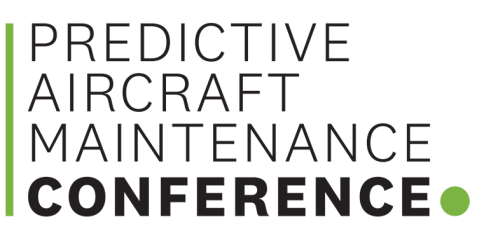
This event seeks to explore the MRO possibilities that arise from the collection and analysis of the massive amount of data generated from operating today’s aircraft. Fascinating case studies are presented based on real experience from OEMs, MROs and airlines.
Predictive Aircraft
Maintenance Conference
ABOUT
ABOUT
ABOUT
Aviation Business News
Aviation Business News provides aviation industry news, features, analysis and dynamic digital publications, with the www.aviationbusinessnews.com website being the online home for MRO Management, Airline Cargo Management and Aircraft Cabin Management magazines.
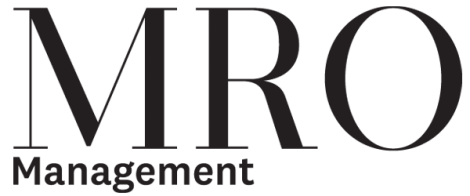

Aircraft Maintenance
& Engineering Directory
The Aircraft Maintenance & Engineering Directory is the definitive industry guide to aviation maintenance, repair and overhaul, used as a reference tool by maintenance professionals worldwide. It contains a report on MRO developments and essential industry data. Now in its 24th year, it is the most comprehensive source of information on MRO facilities worldwide.
MRO Management magazine delivers deep insights into current business thinking and strategies driving the maintenance, repair and overhaul sector of the commercial aviation industry.
The magazine combines in-depth articles, expert commentary pieces and analysis, reaching a global audience of 9,000+ print subscribers and 16,000+ digital subscribers.
BACK TO TOP
<
Aviation Business News is a publisher of dynamic digital magazines and special reports. These interactive publications utilise videos, images, audio, graphics and presentations and are modern, visually appealing and easy-to-read.
Complementing Aviation Business News’ print titles and the aviationbusinessnews.com website, these digital publications go into more depth on specific industry sectors, topics, geographic regions, companies or any other subject.
Building brands & dynamic content
in the commercial aviation industry








